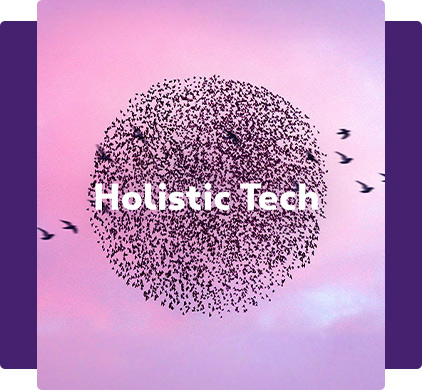Stay ahead of the curve with our data & AI services
Our team of 300 specialists helps you unlock the full potential of your data, thanks to the support of artificial intelligence. From collection and secure storage to integration and analysis, we help you make your data work harder. That way, you can maintain your competitive edge.
Data & AI as a foundation of Holistic Tech
Holistic Tech is our vision on IT and communications: one integrated approach that combines technology, expertise, and local presence. Our Data & AI services are a key part of Holistic Tech. Our experts help you collect, store securely, integrate smartly, and analyse your data with AI. This way, you turn insights into action faster - and stay ahead of the competition.
That's Holistic TechOur Data & AI Services for large companies
AI tailored for business
Leverage artificial intelligence to turn insights into action faster. Our tailored AI solutions help you automate processes, enhance customer experiences, and make data-driven decisions.
Business Intelligence & data platforms
Turn raw data into strategic insights. Our business intelligence services, and BI platforms enable smarter reporting and better decision-making for large enterprises.
Internet of Things (IoT)
Connect devices, collect real-time data, and improve your processes. Discover intelligent IoT solutions that optimize assets, infrastructure, and supply chains - ideal for sectors like industry, logistics, and retail.
Electronic Smart Labels
With electronic smart labels, you can easily update prices on digital labels while synchronizing inventory and accounting systems. Gain flexibility and improve the customer experience in retail and industrial environments.
